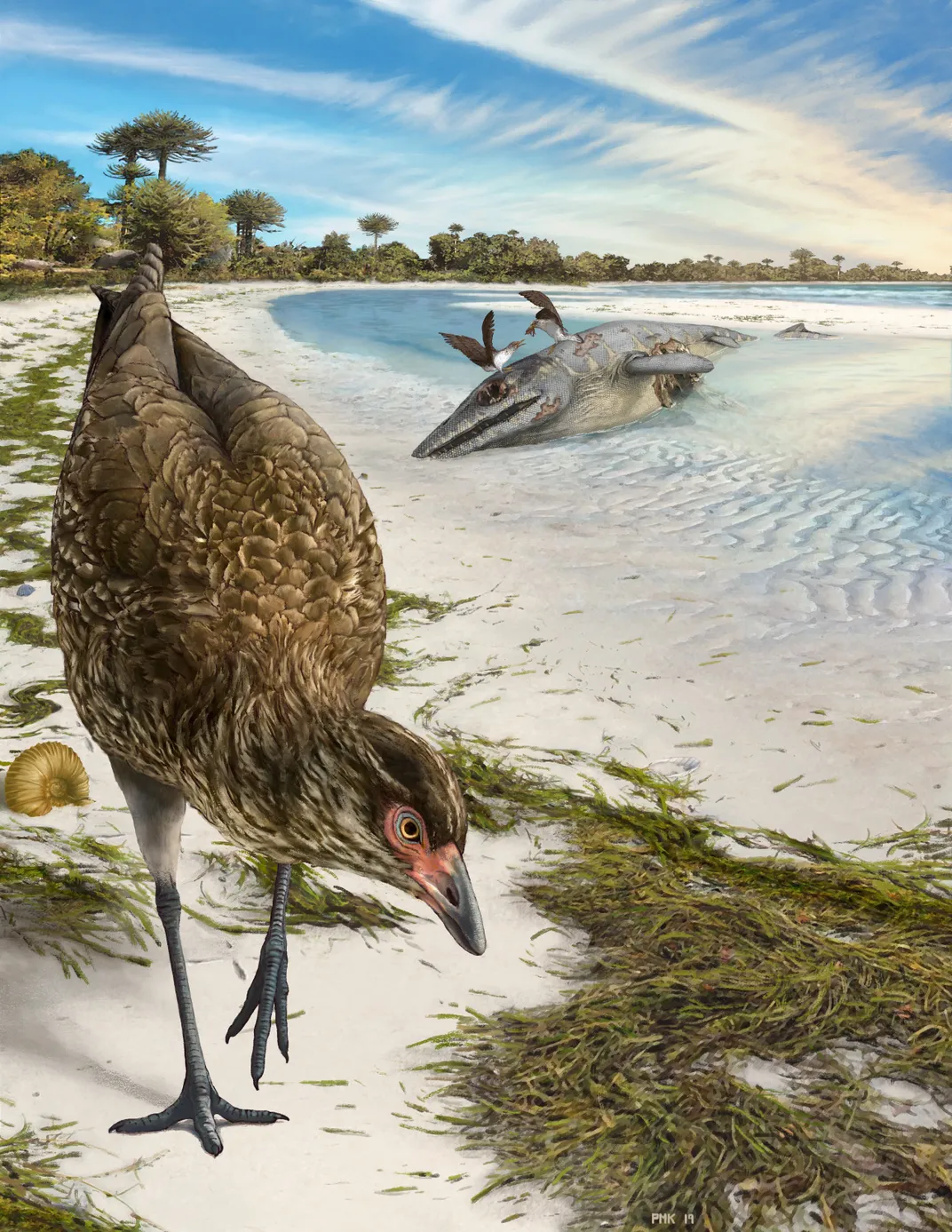At 67 Million Years Old, Oldest Modern Bird Ever Found Is Natural ‘Turducken’
Remarkable fossil hints at the traits birds evolved just before an asteroid wiped their nonavian dinosaur kin
/https://tf-cmsv2-smithsonianmag-media.s3.amazonaws.com/filer/71/fa/71fac608-635c-412c-adea-f27eec4b328a/image_three.png)
Roughly 66.8 million years ago—not long before the end-Cretaceous extinction that wiped out all non-avian dinosaurs—a diminutive, quail-sized bird met an unfortunate and untimely end.
But the relatives of this pint-sized creature—a newly described fossil cheekily dubbed “Wonderchicken”—lived on, helping to seed the enduring, diverse lineage of birds that still fills the skies of the modern world.
Now the oldest known member of the contemporary branch of the avian family tree, Wonderchicken (formally Asteriornis maastrichtensis) could help today’s paleontologists better understand how birds weathered the extinction that purged three-quarters of all plant and animal species from the surface of the Earth. As such, the petite, ancient fossil represents “one of those great discoveries that come up a few times in a lucky lifetime,” Bhart-Anjan Bhullar, a paleontologist at Yale University who was not involved in the study, tells Cara Giaimo at the New York Times.
Birds first showed up on the paleontological scene around 150 million years ago, making their debut with toothsome terrors like Archaeopteryx that likely resembled their more reptilian-looking dinosaurian ancestors, reports George Dvorsky for Gizmodo. Sometime during the Cretaceous, though, our feathered friends began to shed their teeth, bony tails and clawed wings in favor of more docile traits. But evidence of these ancient avians has been scant, leaving a gaping hole in the origin story of modern birds.
Wonderchicken stands poised to fill this gap. Nestled within a hunk of rock first unearthed in 2000, the fossil languished in obscurity for nearly two decades before being spotted by paleontologists Daniel Field and John Jagt, who decided to investigate its contents. After scanning the block of rock, which had a few broken limb bones poking out, the pair were shocked to discover an almost perfect preserved skull, just a couple inches long.

Boasting the face of a chicken or turkey superimposed on the head of a duck, the skull is, in a way, a natural “turducken”—and remarkably modern, Field, Jagt and their colleagues report this week in the journal Nature. As Field explains to the Guardian’s Nicola Davis, the bird’s long, slender legs point to a possible shoreline habitat. This medley of features puts Wonderchicken, which was probably about the size of a seagull, near the likely evolutionary juncture where waterfowl (like ducks) and landfowl (like poultry) once split, according to Gizmodo.
The fossil’s fortuitous position in its lineage, as well as the asteroid impact that followed closely on its heels, inspired the team to give it the name Asteriornis, a nod to Asteria, the Greek goddess of falling stars who transformed into a quail.
At least one other modern-looking bird is known from the Cretaceous—a creature called Vegavis iaai, which post-dated Wonderchicken by about 200,000 or 300,000 years and left a strew of bones in the rocks of what’s now Antarctica. Pried from the sediments of Europe, Asteriornis both expands the avian timeline and hints that today’s birds may have evolved in the northern hemisphere, rather than the south, according to the Guardian. Though more fossils may someday change the story, the new findings hint that birds may have acquired some important traits in just the nick of time—just hundreds of thousands of years before that fateful space rock smashed into Earth.
“This is an incredibly informative specimen,” Amy Balanoff, a paleontologist at Johns Hopkins University who wasn’t involved in the work, tells Gretchen Vogel at Science magazine. “It gives us some clues about what characteristics were key in surviving” that catastrophic event.
/https://tf-cmsv2-smithsonianmag-media.s3.amazonaws.com/accounts/headshot/10172852_10152012979290896_320129237_n.jpg)
/https://tf-cmsv2-smithsonianmag-media.s3.amazonaws.com/accounts/headshot/10172852_10152012979290896_320129237_n.jpg)